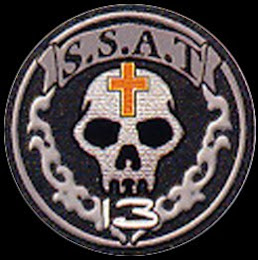The Prometheus was originally intented to be the prototype of a new generation of battlemechs which would be more efficient, better armed and faster than their predecessors. As construction progressed, however, several experimental systems were added to the basic frame of the machine, making it a one-of-akind wonder, too costly to be reproduced. Although greatly ressembling the earlier Pathfinder and Retaliator, the Prometheus is a totally redesigned vehicle. The engineering team chose to put the emphasis on maneuverability and firstsight- first-kill capacity at any angle of attack. To maximize use of the weapons and flight systems, the cockpit uses a vectoring/self-correcting computer. With the recent addition of the highly experimental CAT control apparatus, the Prometheus essentially allows the pilot to perform most flighvfight operations without relying on slow manual controls, thus greatly improving the response time. Use of the new G-cockpit help negates the violent inertial stress associated with the high maneuvering capacity of the EAX-C1.

The impressive weaponry includes two experimental plasma interfaces. These can change the function of their emitter arrays to serve either as a beam cannon or a non-limited plasma lance. If successful, these are expected to become standard issues on future Earth Federation officer units.

Variations
The Prometheus is unique in its ability to use a large "suit" of extra armor called the "Storm Attacker" configuration. It was added to the project's requirements after intelligence reported that the feasibility of large (80t tons) Battle Mech was being studied by OLYMPUS engineers. Instead of redesigning the whole unit to counterattack this new development, the Skunk Work team chose to equip the Prometheus with additional bolt-on armament. Missile launchers were mounted on the main body in large armored housings, while a pair of powerful beam cannons provided the main punch. Large claw-arms extend out of the missile units for close combat -plasma lances would have been preferred, but the energy requirements proved too great. A particle scattering gun was mounted instead. Although the bulk of the extra weapon systems would normally affect the Prometheus' performances, it is not so. Additional boosters virtually negate the mass, even improving the acceleration rate when used. If those thrusters are put out of commission, all weapon housings can be jettisoned in seconds, leaving the Prometheus undamaged and unburdened.

Service Record
Being an experimental unit, the Prometheus is not expected to see combat. Computer simulations have clearly shown that in the hands of a capable pilot, nothing can resist its sheer firepower and speed. Still, the military high command refuses to commit it to any kind of operation, deeming it "too valuable to use"

The impressive weaponry includes two experimental plasma interfaces. These can change the function of their emitter arrays to serve either as a beam cannon or a non-limited plasma lance. If successful, these are expected to become standard issues on future Earth Federation officer units.

Variations
The Prometheus is unique in its ability to use a large "suit" of extra armor called the "Storm Attacker" configuration. It was added to the project's requirements after intelligence reported that the feasibility of large (80t tons) Battle Mech was being studied by OLYMPUS engineers. Instead of redesigning the whole unit to counterattack this new development, the Skunk Work team chose to equip the Prometheus with additional bolt-on armament. Missile launchers were mounted on the main body in large armored housings, while a pair of powerful beam cannons provided the main punch. Large claw-arms extend out of the missile units for close combat -plasma lances would have been preferred, but the energy requirements proved too great. A particle scattering gun was mounted instead. Although the bulk of the extra weapon systems would normally affect the Prometheus' performances, it is not so. Additional boosters virtually negate the mass, even improving the acceleration rate when used. If those thrusters are put out of commission, all weapon housings can be jettisoned in seconds, leaving the Prometheus undamaged and unburdened.

Service Record
Being an experimental unit, the Prometheus is not expected to see combat. Computer simulations have clearly shown that in the hands of a capable pilot, nothing can resist its sheer firepower and speed. Still, the military high command refuses to commit it to any kind of operation, deeming it "too valuable to use"



No comments:
Post a Comment